Valencia: from sunniest city to Green Capital of Europe
By Atika Shubert, CNN(CNN) – Valencia has long been one of Spain’s sunniest cities, thanks to its prime location on the Mediterranean. Now, it can also claim to be the most sustainable after winning the coveted Green Capital of Europe title.The European Commission cited Valencia’s 5 million square meters of green space. According to the Commission’s Report, 97 percent of residents live less than 300 meters from a major green area. Whether that’s the popular wide sandy beaches of the Mediterranean or the marshy lagoon of the Albufera where Valencia’s paella rice is grown.The Green Capital title is given annually to a city in Europe that sets an environmental example for others to follow. The European Commission awards 600,000 euros ($656,000) to the winner to fund more sustainable programs. The real prize, however, is the marketing boost that comes with a city’s certified green credentials. Previous winners have included Tallinn, Estonia, and Oslo, Norway, among others.“I think it’s a recognition by the European Community of our common work,” says Paola Llobet, Valencia’s councilor for tourism and innovation. “It’s something that we, as a community, have been building for years, within neighborhoods. We have been protecting our orchards, our beaches, our sea, the Albufera natural park and more.”Would-be visitors need only to look at a map of the city to see the most striking example of Valencia’s green spaces: the Turia Nature Park, a nine-kilometer-long converted riverbed that cuts through the city.Futuristic masterpieceAfter a deadly flood in 1957, the river was redirected and the Turia was slated to become a multi-lane highway. Public opposition thwarted the development, however, giving rise to a movement that demanded more green space in the city center.Today, the Turia has become a treasured communal space: a green ribbon that connects the fruit orchards on the outskirts to the Mediterranean Sea. Weekends are filled with soccer, rugby and baseball games at one of the many sports facilities in the park. On a sunny day, families picnic under groves of baobab and cypress trees while rock climbers and amateur acrobats try their skills at clambering up or spiraling down some of the medieval stone bridges that still span the park.It is also home to the City of Arts and Sciences, the futuristic masterpiece of Valencian architect, Santiago Calatrava – now one of the city’s biggest attractions. Its bright white curves and skeletal supports give it a space-age design, making it a favorite shooting location for science fiction films and series, from Star Wars to Westworld.The Turia also functions as a sustainable transportation highway. Designated paths run along the length of the park making it ideal for commuters on bicycles and electric scooters to cut through the city and avoid street traffic.A love of cycling is what led Giuseppe Grezzi, an Italian transplant to Valencia, to get involved in local politics, eventually becoming the city’s councilor of sustainable mobility for eight years. His proudest achievement: increasing bike lanes in the city by more than 50 percent.“The city is flat. The weather is perfect! I wanted to be able to bike everywhere,” he said after attending a community meeting to discuss Valencia’s Green Capital status. “We transformed the city. I was proud to be part of it. We put in so many policies to protect public space, to make the city greener, with more pedestrian areas, and to reduce pollution.”During his term, the city poured money into sustainable transport, expanding a new metro line, installing public bicycles, and augmenting nearly 200 kilometers (120 miles) of bike paths that link to several “green routes” out of the city.During the pandemic, Valencia took the initiative to convert several high-traffic areas into pedestrian-only zones, including the city’s central roundabout, where Valencia’s City Hall, the Ayuntamiento, sits in an impressive 18th-century building.Fruit bountyThe other benefit of all that green is Valencia’s bounty of fruits and vegetables. The city is surrounded by La Huerta, more than 120 square kilometers of fruit orchards and vegetable plots whose produce is sold at Valencia’s municipal markets. The European Commission singled out the city’s neighborhood and food program as it pushes for Zero Kilometer food, a movement that advocates growing and processing food in the same place where it is sold and eaten in order to reduce transport costs and carbon emissions.Valencia’s Mercado Central is a good place to see that in action. Nearly 300 hundred fruit, vegetable, fish and meat vendors sell their wares in a huge modernist hall. The day begins before dawn, when hundreds of vehicles begin to unload fresh produce from the surrounding area, including bushels of Valencia’s famous oranges.Though it has become a popular tourist attraction, the Mercado Central is still used by locals. Roughly 80% of customers are local residents, according to the market.That includes
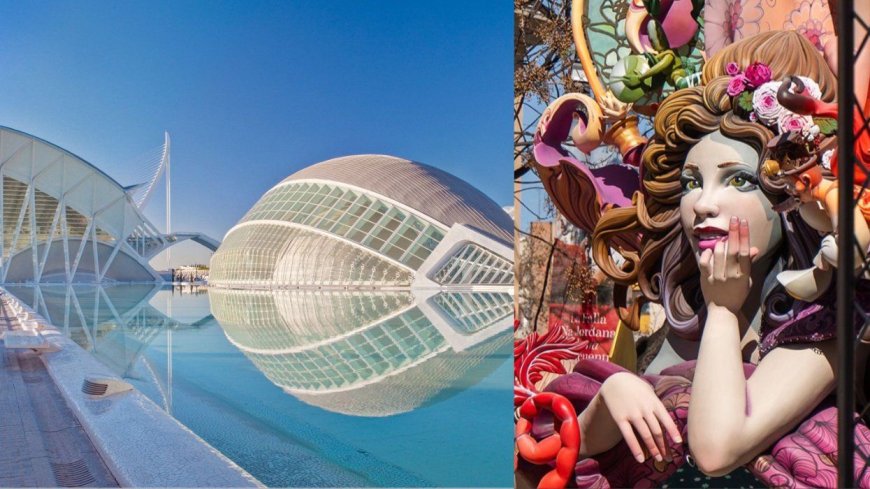

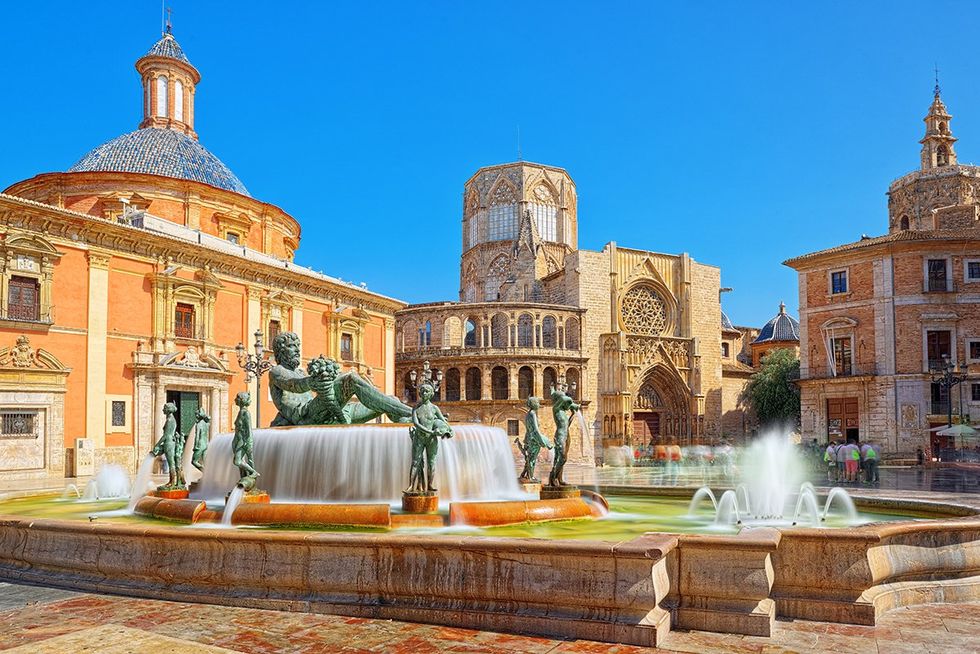
By Atika Shubert, CNN
(CNN) – Valencia has long been one of Spain’s sunniest cities, thanks to its prime location on the Mediterranean. Now, it can also claim to be the most sustainable after winning the coveted Green Capital of Europe title.
The European Commission cited Valencia’s 5 million square meters of green space. According to the Commission’s Report, 97 percent of residents live less than 300 meters from a major green area. Whether that’s the popular wide sandy beaches of the Mediterranean or the marshy lagoon of the Albufera where Valencia’s paella rice is grown.
The Green Capital title is given annually to a city in Europe that sets an environmental example for others to follow. The European Commission awards 600,000 euros ($656,000) to the winner to fund more sustainable programs. The real prize, however, is the marketing boost that comes with a city’s certified green credentials. Previous winners have included Tallinn, Estonia, and Oslo, Norway, among others.
“I think it’s a recognition by the European Community of our common work,” says Paola Llobet, Valencia’s councilor for tourism and innovation. “It’s something that we, as a community, have been building for years, within neighborhoods. We have been protecting our orchards, our beaches, our sea, the Albufera natural park and more.”
Would-be visitors need only to look at a map of the city to see the most striking example of Valencia’s green spaces: the Turia Nature Park, a nine-kilometer-long converted riverbed that cuts through the city.
Futuristic masterpiece
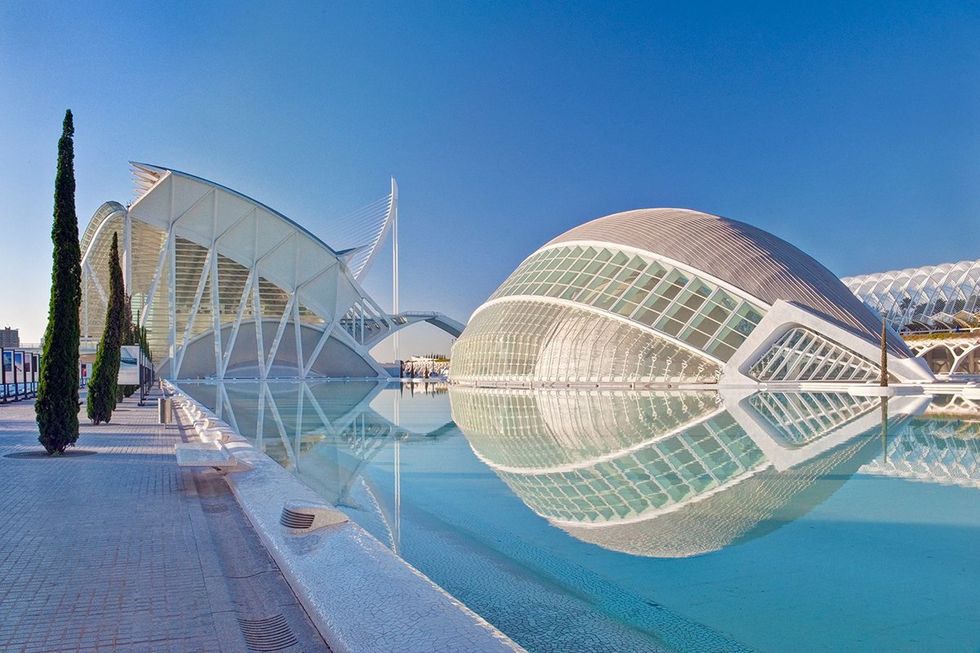
After a deadly flood in 1957, the river was redirected and the Turia was slated to become a multi-lane highway. Public opposition thwarted the development, however, giving rise to a movement that demanded more green space in the city center.
Today, the Turia has become a treasured communal space: a green ribbon that connects the fruit orchards on the outskirts to the Mediterranean Sea. Weekends are filled with soccer, rugby and baseball games at one of the many sports facilities in the park. On a sunny day, families picnic under groves of baobab and cypress trees while rock climbers and amateur acrobats try their skills at clambering up or spiraling down some of the medieval stone bridges that still span the park.
It is also home to the City of Arts and Sciences, the futuristic masterpiece of Valencian architect, Santiago Calatrava – now one of the city’s biggest attractions. Its bright white curves and skeletal supports give it a space-age design, making it a favorite shooting location for science fiction films and series, from Star Wars to Westworld.
The Turia also functions as a sustainable transportation highway. Designated paths run along the length of the park making it ideal for commuters on bicycles and electric scooters to cut through the city and avoid street traffic.
A love of cycling is what led Giuseppe Grezzi, an Italian transplant to Valencia, to get involved in local politics, eventually becoming the city’s councilor of sustainable mobility for eight years. His proudest achievement: increasing bike lanes in the city by more than 50 percent.
“The city is flat. The weather is perfect! I wanted to be able to bike everywhere,” he said after attending a community meeting to discuss Valencia’s Green Capital status. “We transformed the city. I was proud to be part of it. We put in so many policies to protect public space, to make the city greener, with more pedestrian areas, and to reduce pollution.”
During his term, the city poured money into sustainable transport, expanding a new metro line, installing public bicycles, and augmenting nearly 200 kilometers (120 miles) of bike paths that link to several “green routes” out of the city.
During the pandemic, Valencia took the initiative to convert several high-traffic areas into pedestrian-only zones, including the city’s central roundabout, where Valencia’s City Hall, the Ayuntamiento, sits in an impressive 18th-century building.
Fruit bounty
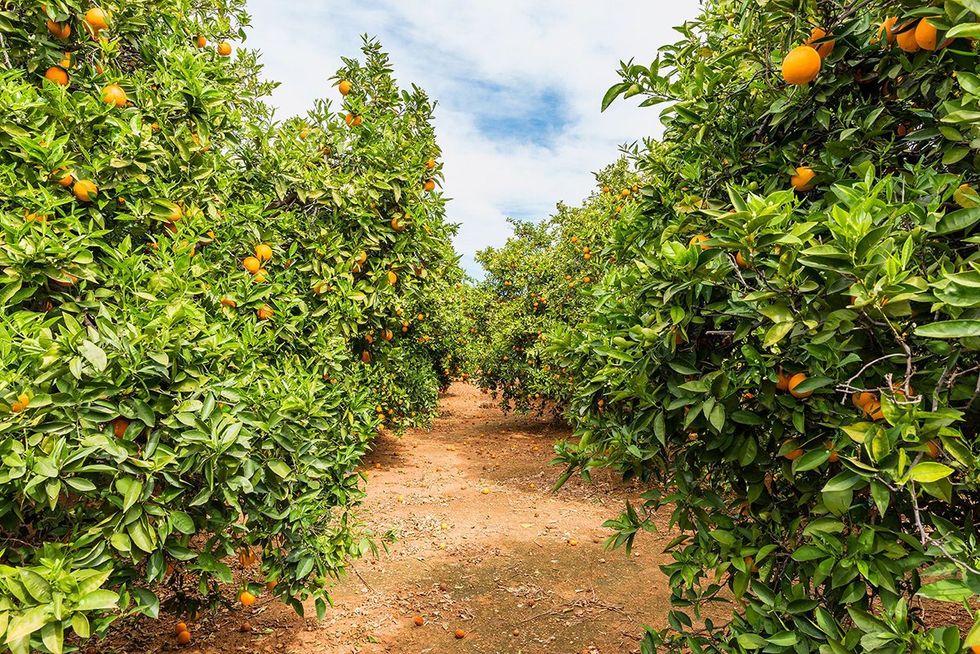
The other benefit of all that green is Valencia’s bounty of fruits and vegetables. The city is surrounded by La Huerta, more than 120 square kilometers of fruit orchards and vegetable plots whose produce is sold at Valencia’s municipal markets. The European Commission singled out the city’s neighborhood and food program as it pushes for Zero Kilometer food, a movement that advocates growing and processing food in the same place where it is sold and eaten in order to reduce transport costs and carbon emissions.
Valencia’s Mercado Central is a good place to see that in action. Nearly 300 hundred fruit, vegetable, fish and meat vendors sell their wares in a huge modernist hall. The day begins before dawn, when hundreds of vehicles begin to unload fresh produce from the surrounding area, including bushels of Valencia’s famous oranges.
Though it has become a popular tourist attraction, the Mercado Central is still used by locals. Roughly 80% of customers are local residents, according to the market.
That includes a growing number of Michelin-starred restaurants in the city. In 2005, chef Begoña Rodrigo started her restaurant, La Salita, to showcase the local ingredients of the Valencian region. By 2019, Rodrigo won a Michelin star for her innovative menu that “elevates the cooking of vegetables to new heights.”
Political tussles
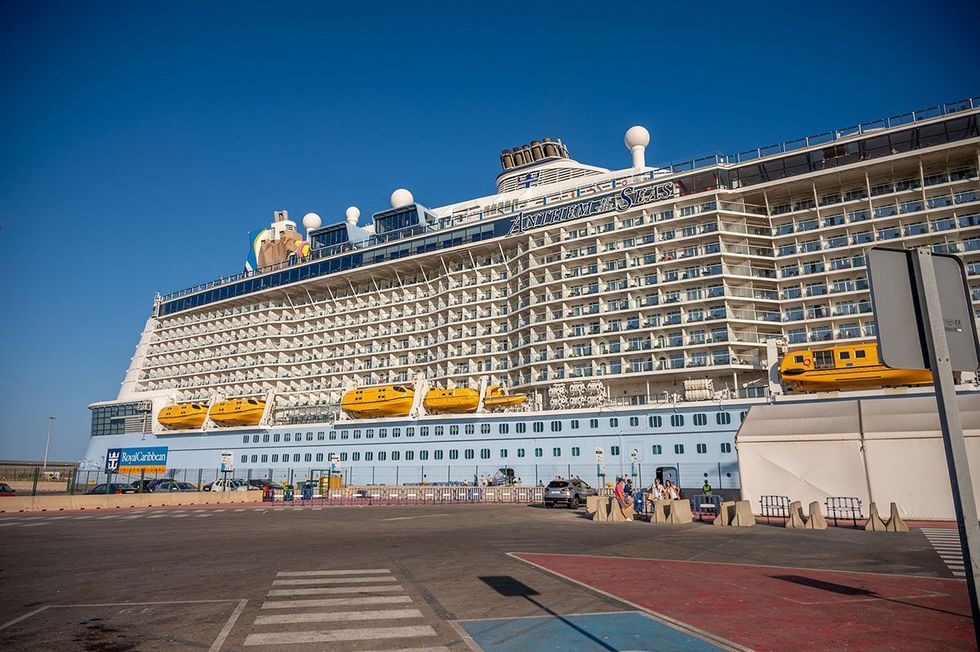
There are still major environmental challenges ahead for the city, however. Not least of which is the shifting political environment.
Valencia’s Green Capital proposal was initiated under the city’s previous administration, a coalition of left-leaning parties known as Compromis. Elections in 2023, swept into power a coalition between the center-right Popular Party (PP), and the far-right Vox, a party that has denied the existence of climate change.
That worries Giuseppe Grezzi, the former councilor of sustainable mobility.
“A lot of our projects have simply stopped. Many are now paralyzed by the current administration,” he said. “So, we are very worried about it, whether it will be continued. Because this strategy should not be partisan, not just attached to one party. All the city must be involved in it.”
Paola Llobet, the current councilor of tourism and innovation says that while some projects are being reassessed, the current administration is still committed to achieving sustainability goals.
“Maybe we have a different way of arriving at our goals, different public policies,” she said. “But the goal is still the same: to have a sustainable city and a better quality of life for the people who live here and the people who come here to visit us.”
One flash point is Valencia’s commercial port and cruise terminal. A proposal to expand the port is under consideration, potentially bringing in tens of thousands of new tourists a year. The current administration is also exploring the possibility of adding new direct flights from the US to Valencia’s International Airport.
Cities like Barcelona and Venice, however, have struggled to cope with the sheer number of tourists arriving. Even for those working in tourism there is concern that Valencia could suffer the same fate.
“If they can put a limit on tourism, whether by cruise ship or plane, that may be necessary to have a cut-off,” one tour guide, who declined to be named, told CNN Travel. “I worry that at some point, the numbers become unsustainable.”
For Llobet, that means using technology to ease the impact of tourism on Valencia. She has started a project to produce “heat maps” of the city that tourists and guides can use to show which areas are more congested, suggesting alternative routes and to encourage tourists to visit other sites in the city.
“We have a lot of data. We are measuring air pollution; sound pollution and we are starting a project on carbon emissions.” Llobet said, “We want the impact of the tourists to be positive. You know, 70% of the employment in the city depends on the service sector that is absolutely linked with the tourists.”
Perhaps the most visible environmental challenge is Valencia’s Fallas tradition, a springtime riot of noise, color and pageantry that carries a heavy environmental toll. Tens of thousands flock to the city every March to participate in a succession of elaborate parades and firework extravaganzas. Giant colorful statues are displayed in neighborhoods across the city, then set alight at the climactic end of the festival. The result is often plumes of black smoke from burning polystyrene and petroleum-based products.
Sustainable traditions
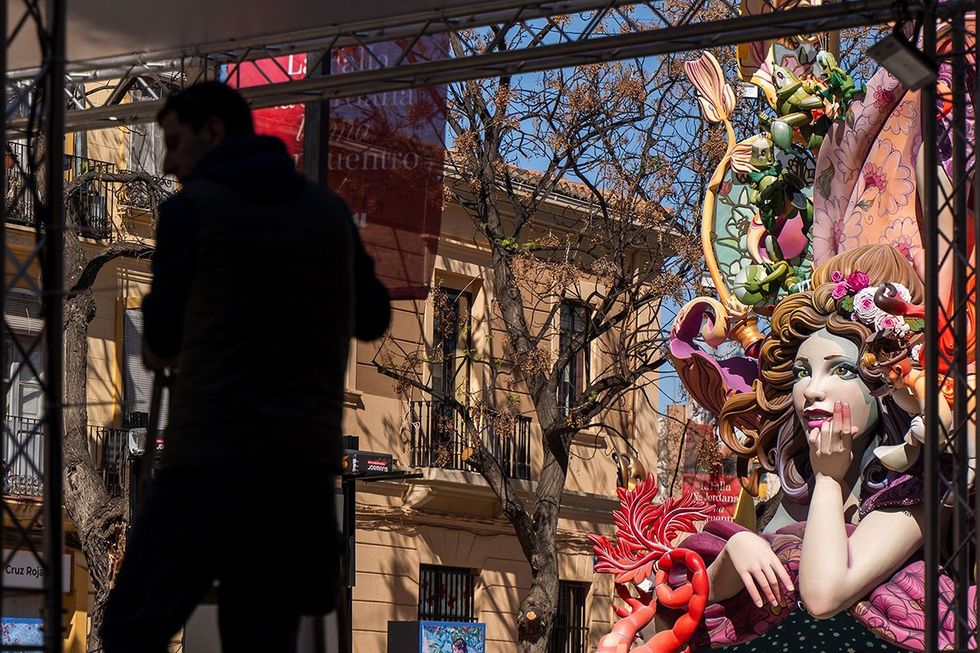
This year, in honor of its Green Capital status, Valencia is celebrating its first-ever “Green Fallas,” providing funding for neighborhoods to build with environmentally friendly alternatives such as paper maché, wood, and rice stalks. The aim is to celebrate Fallas with entirely sustainable materials by 2030.
This year, the Fallas centerpiece is a giant two-story statue now being built in front of City Hall called “2 Doves, 1 Branch.” An appeal for peace depicts a pair of white doves carrying an olive branch. The structure is built from wood, papier mâché, and Neops, a foamy alternative to polystyrene made from plant residue, such as waste from processing wheat and cereal grains.
Still, it’s hard to put environmental limits on cherished traditions. After the interview, Llobet invited CNN Travel to the main balcony of City Hall to view the “mascletà,” a daily fireworks display during the first 19 days of the festival. Each day it’s hosted by a different Valencian neighborhood community, known as a “fallero.”
Just before two in the afternoon, a group of specially selected “fallera,” young women and girls in elaborate traditional dress, accompanied the mayor to signal the start of the mascletà.
After a single shot comes a steady volley of bangs, followed by the zipping scream of fireworks exploding into white stars, barely visible against the blue sky. What was visible, however, were billowing clouds of smoke. As local broadcasters on the balcony breathlessly explained, the art of the mascletà is not the light show but the rhythm and crescendo of sound, culminating in a deafening barrage of thrilling, thunderous noise and smoke.
Llobet concedes it’s hard to make Fallas a truly green event, but they are aiming to make it a more sustainable tradition.
“We are working with different ‘falleros’ to be better with the use of plastic and waste, the use of water. Every year, we try and improve it a bit more,” she said. “But we have more than 100,000 ‘falleros’ in the city. One in every plaza or square. So, really, it’s a way of life.”
The-CNN-Wire
™ & © 2024 Cable News Network, Inc., a Warner Bros. Discovery Company. All rights reserved.

 Mark
Mark 





